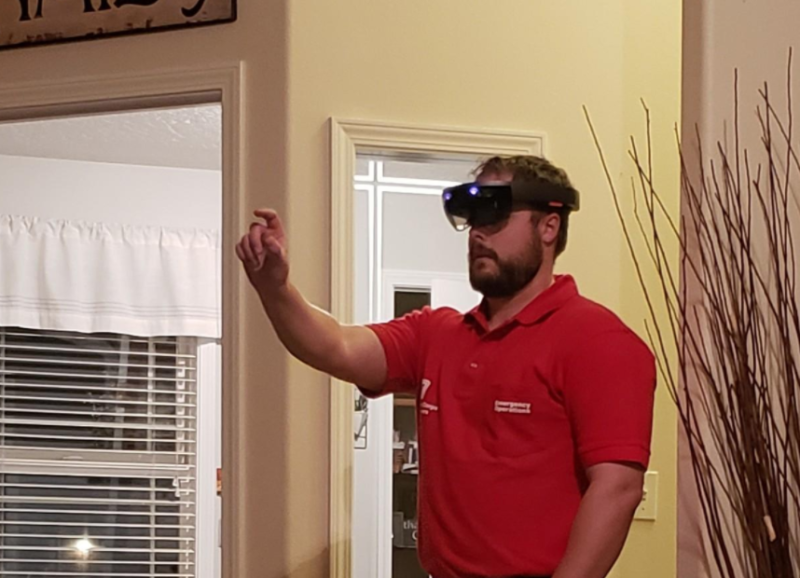Scientists and engineers at the U.S. Army Engineer Research and Development Center (ERDC) are using augmented reality technology to assist peers throughout the U.S. Army Corps of Engineers in virtually conducting site assessments of alternate care facilities (ACFs) across the country.
Augmented reality technology, developed by researchers at the ERDC Information Technology Laboratory (ITL), offers a way for the Corps to assess potential ACF locations while assisting with social distancing and safety considerations.
“The ERDC team is forward thinking in terms of how immersive computing can be applied to solve real-world engineering science and defense-related challenges,” said Jonathan Boone, an ITL research civil engineer.
Using live-streaming and mixed-reality overlays, smaller groups of engineers located on-site have the capability to share information with subject-matter experts working remotely. In addition to the safety benefits of leveraging the technology, real-time collaboration of assessment results has expedited the delivery of information to FEMA.
Currently five Corps districts are prototyping the technology, with two more districts planning to use the technology soon.
“Facility assessments are critical to the success of the ACF mission,” Boone said. “Having reach-back, live-stream capabilities allows engineers and architects who are leading efforts from a ‘boots on the ground’ team perspective to get virtual support from other USACE subject-matter experts.”
Using augmented reality for ACF assessments is just one way that the ITL team has and continues to identify ways to use innovative technology to address real-world challenges. “Innovate, immerse and inspire” is the mission of the ERDC team members delivering solutions with augmented reality technologies.
“Augmented and virtual reality is the connective tissue for all things the ERDC is doing with artificial intelligence and robotics to leverage more informed decision-making for the nation and the warfighter,” Boone said. “In a virtual world, our stakeholders can practice, fail, learn and improve through repetition in a safe environment. That way, they’ll be better suited to perform their duties.”





